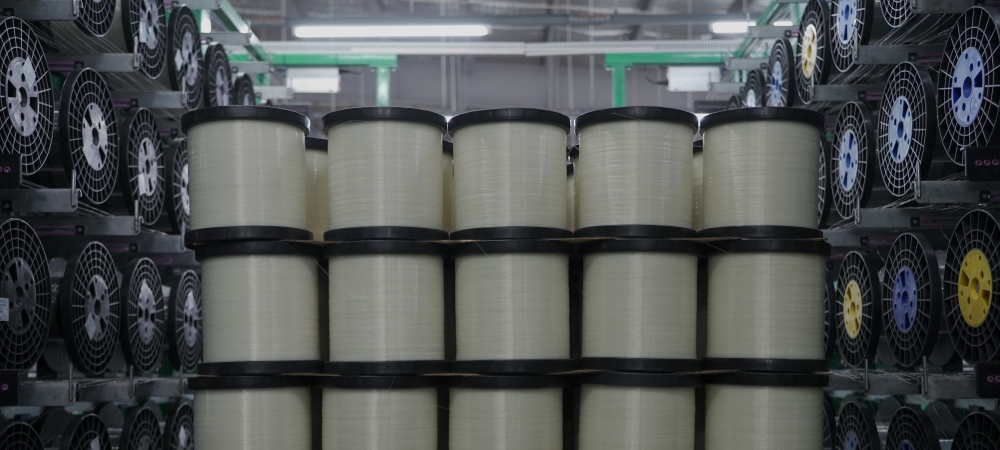
Yarns are the fundamental elements of knitted or woven fabrics. In traditional textile manufacturing, it is common to first make yarn from fibers and then produce fabric from the yarn. Generally, yarn can be defined as a linear assemblage of fibers or filaments formed into a continuous strand. Figure 4.1 shows yarns.
As illustrated by the idealized model in Figure 4.2, yarns may be composed of one or more continuous filaments or many non-continuous, relatively short fibers known as staple fibers. To overcome fiber slippage and form a functional yarn, staple fibers are usually given a significant amount of twist or entanglement. Yarns made from staple fibers are often referred to as spun yarns. Two or more single yarns can be twisted together to form ply or plied yarns.
Yarns can be classified in several ways. For example, they may be classified as either pure yarns or blended yarns, depending on whether one or more types of fibers are mixed during spinning. They may also be categorized as carded yarns or combed yarns, depending on whether the fibers have undergone a combing process.

There are two main methods for making yarns:
Staple yarns, also called spun yarns, are made from staple fibers such as natural fibers (e.g., cotton, wool, linen) or synthetic fibers (e.g., polyester, polyamide, acrylic). Yarns made from a mix of natural and synthetic fibers are called blended yarns. Traditional systems for converting staple fibers into yarns include the cotton system and the woolen or worsted system. These spinning processes are typically long and costly, with ring spinning being the most commonly used technology.
Filaments are classified into two types: natural filaments, such as silk, and man-made filaments, such as polyester and viscose. The length of filaments ranges from a few hundred meters to several kilometers. Filament yarns made of a single filament are called monofilaments, while those composed of two or more filaments are called multifilaments.
Yarn quality is a critical factor and is evaluated from several perspectives. One important property is yarn linear density, which corresponds to the thickness of the yarn.
Two major systems are used to calculate linear density:
Weight-based system (fixed length)
Length-based system (fixed weight)